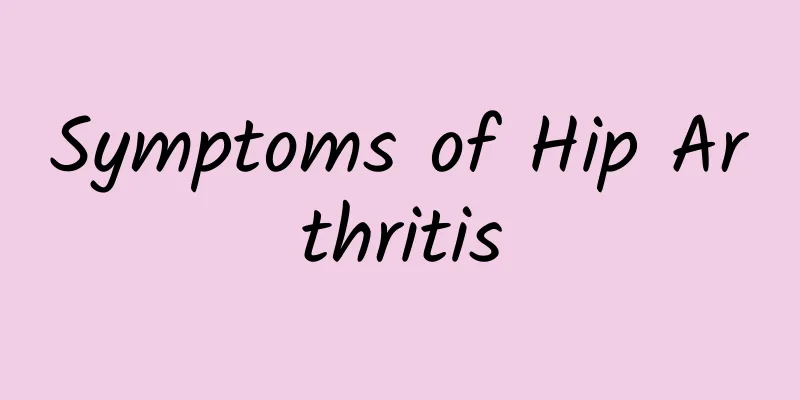Symptoms of Hip Arthritis

|
There are many symptoms of hip arthritis, and in clinical practice, many doctors rely on these symptoms of hip arthritis to diagnose hip arthritis. The so-called hip arthritis actually refers to some inflammation of the hip joint, and the incidence of this type of hip arthritis is relatively high. Some patients with hip arthritis often spend most of their time lying in bed because of the onset of hip arthritis. This is a very painful thing, which no one wants to do. Hip arthritis is a common disease in our human body. Therefore, as long as we observe carefully, we will generally find that there are many people around us suffering from hip arthritis. However, most of them are middle-aged and elderly patients. Of course, there are also patients of other age groups. Here we first introduce the symptoms of hip arthritis. The hip joint is composed of the femoral head and the acetabulum of the hip bone, and is a ball-and-socket joint. Hip arthritis refers to a type of osteoarthritis caused by long-term uneven load on the hip joint surface, resulting in degeneration of articular cartilage or changes in bone structure. Its main manifestations include pain in the outer side of the buttocks, groin and other parts (which may radiate to the knee), swelling, joint effusion, cartilage wear, bone spur proliferation, joint deformity, limited internal rotation and extension of the hip, inability to walk and even bedridden. The incidence of hip arthritis in the Chinese population is less than that in Caucasians. 1. Systemic manifestations The onset is acute, with chills and high fever, which are typical symptoms of acute infection and poisoning. 2. Local manifestations Hip pain, passive position in flexion, abduction, and external rotation. Children have knee pain, high temperature, rapid pulse, and tenderness in the anterior hip. Percussion pain and positive Thomas sign. Causes 1. Obesity There is a direct correlation between weight gain and the incidence of hip arthritis. Obesity is an aggravating factor. Weight loss in obese people can reduce the incidence of hip arthritis. 2. Cartilage structure As cartilage becomes thinner and stiffer, its tolerance for stress decreases, increasing the chances of developing hip arthritis. 3. Trauma and external force When joints are subjected to unbalanced muscle force and local pressure, cartilage degeneration occurs. Osteoarthritis does not occur with normal joint movement or even after strenuous exercise. 4. Genetic factors The joint involvement varies among different races. It is more common in Caucasians, but less common in people of color and Chinese. Gender also has an impact, and this disease is more common in women. There are many symptoms of hip arthritis, which we can actually see from the above introduction. The symptoms of hip arthritis can generally be divided into systemic symptoms and local symptoms. Systemic symptoms generally include rapid onset, fever, etc., while local symptoms generally include joint pain, high body temperature, rapid pulse, etc. Therefore, our patients with hip arthritis must pay attention to these aspects in the future. |
<<: How to prevent pneumonia in children
>>: How to Treat Rheumatoid Arthritis
Recommend
Why does eczema cause blisters?
Since babies' skin is more fragile than adult...
What ointment to use for red spots on the glans
The appearance of red spots on the glans may be c...
What to do if your one-year-old baby has overbite
If parents find that their child has overbite whe...
What is ivory carving?
Ivory carving is carving on ivory. It is an ancie...
Is breast milk poisonous when a pregnant woman is angry?
The mother's diet should be paid special atte...
How to increase menstrual flow
For some women, the amount of menstrual flow is r...
What is the reason for many red spots on the legs?
If some small red spots appear on your legs, you ...
What causes swollen legs and feet?
Half of the patients with heart disease or some k...
How to deal with blisters caused by moxibustion?
Acupuncture is a treatment method that everyone i...
Does eating MSG during pregnancy have any effect on the baby?
As the pregnancy time of women increases, the fet...
Parafrenulum papules
Rash is a common skin disease. Especially allergi...
Massage methods for sciatica
Patients with sciatica can achieve good relief if...
Will the fetus stop growing at six months of pregnancy?
Some women may experience miscarriage after becom...
For adolescent girls to enlarge their breasts, these three recipes are the most effective
For girls in puberty, if they can make some adjus...
What are the medicinal values of Hedyotis diffusa?
Oldenlandia diffusa is a common Chinese herbal me...









